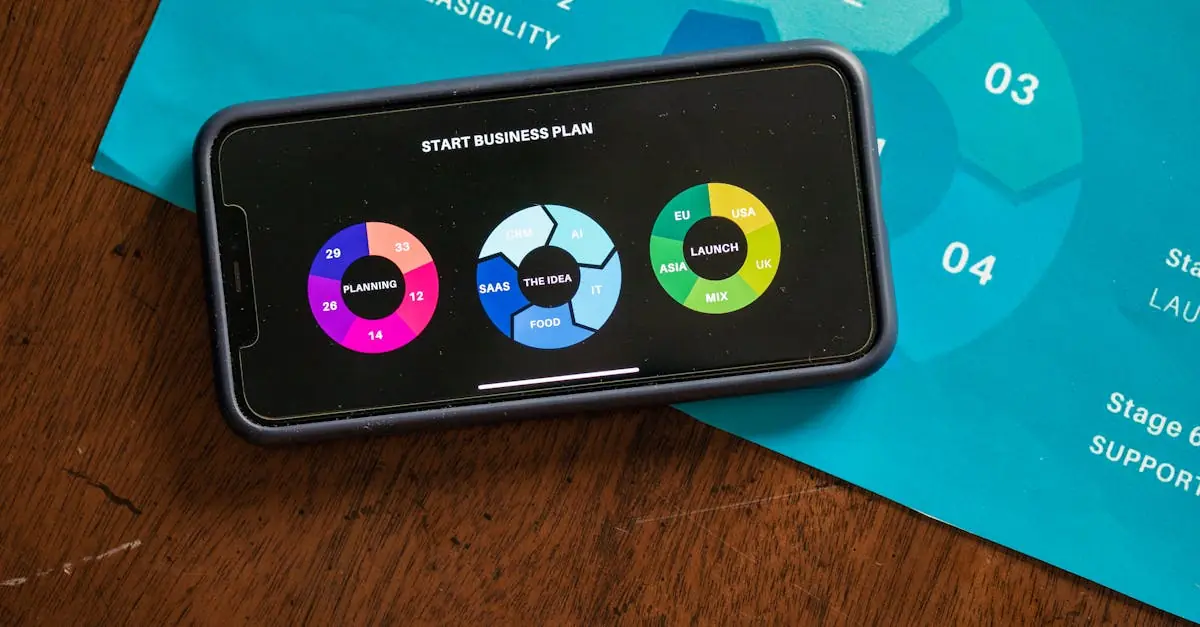Table of Contents
ToggleIn the fast-paced world of software development, a SaaS staging environment is like a dress rehearsal for your app’s grand debut. It’s where developers can test, tweak, and polish their creations without the pressure of a live audience—because let’s face it, nobody wants their app to crash harder than a comedian at a funeral.
Understanding SaaS Staging Environment
A SaaS staging environment serves as a crucial step in the application development process. It enables developers to create a replica of the production environment, allowing for thorough testing before deployment. This controlled setting helps identify bugs and issues without impacting real users.
Testing in a staging environment mimics user interactions, providing insights into how the software will perform under load. Developers can simulate various scenarios, including high user traffic, to ensure the application remains stable. Troubleshooting becomes more efficient as developers resolve issues in this safe space prior to launch.
Realistic data can be used in a staging environment to evaluate functionality. Developers often import datasets that represent actual user information, allowing for precise validation of features. This practice helps ensure compliance with security and data protection regulations.
Moreover, collaboration thrives in a SaaS staging environment. Team members can gather feedback from stakeholders, enabling rapid iterations based on input. Regular updates and improvements occur due to consistent testing and feedback loops.
Automated testing tools frequently integrate into these environments, increasing efficiency. Developers use scripts to run tests automatically, reducing manual effort and minimizing human error. Continuous integration and continuous deployment (CI/CD) pipelines often rely on staging environments for seamless transitions from development to production.
Using a staging environment reduces the risk of major failures during launch. It fosters confidence in the application’s reliability and performance. Ultimately, the SaaS staging environment plays a vital role in delivering quality software that meets user expectations.
Importance of Staging Environments
A SaaS staging environment plays a critical role in software development. It provides a secure space for apps to undergo testing before going live.
Benefits for Development Teams
Development teams gain several advantages from using a staging environment. First, testing code in a replica of the production environment ensures developers identify and address issues early. Second, real-time collaboration occurs as team members can share insights and gather feedback efficiently. Third, automated testing tools integrated within the staging environment streamline processes, which reduces manual efforts and human errors. Finally, using this setup fosters a culture of continuous improvement, as teams can make enhancements rapidly based on testing results.
Impact on Quality Assurance
Quality assurance benefits significantly from staging environments. Testing in a controlled setting provides the opportunity to mimic user interactions accurately. As a result, QA teams can evaluate application performance and stability. Compliance with security and data protection regulations becomes more manageable, as realistic data usage facilitates thorough checks. Moreover, identifying bugs early in the process prevents more complex issues from arising later. Ultimately, the emphasis on quality assurance ensures the software meets both user expectations and required standards.
Key Features of a SaaS Staging Environment
A SaaS staging environment boasts several critical features that enhance software development and testing processes.
Isolation and Accessibility
Isolation plays a vital role in a staging environment. Developers work in a separate space that prevents interference with live applications. This separation allows teams to test features without affecting real user data. Accessibility ensures that team members, including QA and product managers, can collaborate seamlessly. Stakeholders can access the staging environment to review features and provide feedback. This collaborative effort accelerates the development cycle while maintaining a clear focus on quality.
Integration with CI/CD Pipelines
Integration with Continuous Integration and Continuous Deployment (CI/CD) pipelines is crucial for efficiency. Automating the deployment process enables rapid testing and feedback. Developers can push updates quickly to the staging environment for immediate testing. Quick iterations reduce turnaround time and foster a culture of continuous improvement. This integration guarantees that any issues discovered during testing receive prompt attention. Consequently, teams can maintain a reliable deployment process while enhancing overall software stability and performance.
Best Practices for Implementing a SaaS Staging Environment
Establishing a robust SaaS staging environment enhances application quality and ensures smoother deployments.
Setting Up the Environment
Create a staging environment that mirrors the production setting closely. This includes using identical configurations, services, and databases to replicate real-world scenarios effectively. Isolate the staging environment from the production system to prevent any disruptions. Ensure accessibility for team members, including developers and testers, promoting collaboration. Using containerization can ease the setup process, enabling consistent environments across different stages of development. Regularly update the staging environment to reflect any changes in the production system, helping maintain accuracy during testing.
Continuous Testing and Feedback
Integrate continuous testing into the staging workflow to identify issues swiftly. Automated testing tools play a crucial role in this process, providing rapid feedback on code changes. Testing should encompass various user scenarios to mimic real user interactions. Encourage collaboration by allowing team members to review results together, fostering a culture of shared learning. Gathering feedback from stakeholders early in the testing phase enhances the overall product and aligns it closely with user expectations. Establish a routine for updating and revising tests based on previous results, ensuring ongoing improvement and adaptation to new requirements.
Common Challenges and Solutions
Managing a SaaS staging environment presents unique challenges. Developers frequently encounter issues like resource management and data synchronization that can impede their workflows.
Resource Management
Allocating resources efficiently can pose significant challenges. Limited infrastructure leads to performance bottlenecks during testing phases. This scenario often introduces delays in feedback and iteration. Prioritizing resource allocation ensures optimal testing conditions. Implementing cloud solutions allows teams to scale resources on-demand while controlling costs effectively. Utilizing containerization facilitates resource distribution, reducing dependency conflicts. Regularly monitoring usage helps identify resource saturation, allowing teams to make timely adjustments.
Data Synchronization
Maintaining consistency among different data sets is crucial. Inadequate synchronization can result in discrepancies between the staging and production environments. Developers often experience difficulties replicating real-world scenarios without accurate data. Utilizing automated scripts simplifies the process of copying data across environments. Synchronization tools help refresh staging data regularly, ensuring it reflects the latest production changes. Creating clear protocols for data transfers enhances reliability, preventing issues during testing. Consistent data synchronization promotes a more realistic testing environment, ultimately leading to higher application quality.
Conclusion
A well-implemented SaaS staging environment is essential for any development team aiming for a successful application launch. By providing a controlled space for testing and collaboration, it allows teams to identify issues early and refine features before reaching the end-users. This proactive approach not only enhances quality assurance but also fosters a culture of continuous improvement.
With the integration of CI/CD pipelines and automated testing tools, the efficiency of the development process increases significantly. Addressing common challenges such as resource management and data synchronization further solidifies the staging environment’s role in minimizing risks. Ultimately, a robust staging environment empowers teams to deliver reliable and high-quality software that meets user expectations.



